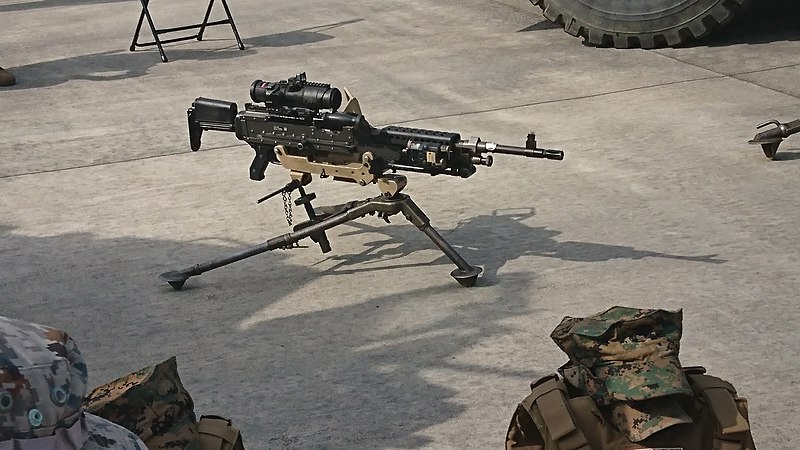As the liberal’s prototypical ‘gun nut’, I like guns. I have a particularly strong affinity for quality firearms. Among some of the best I’ve encountered and owned, Sig Sauer stands out. While Sig Sauer has maintained a solid reputation over the years, their recent surge in prominence has been fueled by securing major contracts from the Department of Defense. Specifically, Sig Sauer now provides handguns, rifles, optics, suppressors, and squad weapons for the US military. I have had the opportunity to operate the civilian versions of some of these weapon systems and can attest to their quality–but no company is that good.
It’s widely acknowledged that Sig Sauer has shown innovation in recent years. However, I find the plausibility questionable for one company to dominate nearly every small arms category for the US military. I’m not alone in this skepticism. After Sig was awarded the Modular Handgun System (MHS) contract, replacing Berreta’s M9, Glock’s VP, Josh Dorsey, highlighted several errors in the testing. The most significant concern was that Sig Sauer was awarded the contract before completing the testing. In the report released by the Government Accountability Office, they pointed toward the price tags with Glock’s proposal exceeding Sig’s by over $100 million.
From my casual observation and Military experience, our government is not exactly renowned for its thriftiness. As Glock’s VP also pointed out, “the importance of a pistol, which doesn’t sound like much unless you realize, if you pull a pistol in combat, you are in deep shit.” This does not sound like the voice of a sore loser, it sounds like the representative of a company that understands the importance of providing the people who protect our freedom the best means of doing so. However, this isn’t to say Glock should have necessarily won the contract. The M17 and M18, based on the Sig Sauer’s P320 platform, are solid choices. Nonetheless, dismissing the Glock 19 before completing testing for a $580 million contract leaves me scratching my head. Even more perplexing is the contract for the primary weapon and squad weapon.
Since its adoption in the late 1960s, the M16, now evolved into the M4, has been primarily manufactured by Colt. The reason behind its adoption was to allow military personnel to carry more ammunition by utilizing a smaller round, the NATO 5.56x45mm as opposed to the M14’s 7.62×51. The DOD announced the intention to switch back to a battle rifle by awarding the primary weapon contract to Sig Sauer with their XM5, now the XM7, which is the militarized MCX Spear. The new rifle fires a proprietary cartridge chambered in 6.8x51mm, marking a significant change from the mass-produced NATO round, that Winchester will be producing.
Along with the battle rifle, the contract includes Sig’s XM250 which is set to replace FN Herstal’s M249 as the squad weapon. This contract is worth nearly $4.5 billion. Sig was almost the only company that stood a chance. The three finalists included a bullpup design (which is just unAmerican), another system with an absent squad weapon, and the ultimately adopted Sig system. There was not a true competition.

Proponents of these recent adoptions emphasize Sig’s innovation. While innovation is commendable, it is often marked by being new and unproven. KelTec, another firearms manufacturer, is also known for innovation but not combat readiness. It is also plausible that Glock’s bid was simply too high on the handgun contract, and there was a lack of viable rifle contenders. However, why rush into billion-dollar deals and not wait? That is exactly what they have done in the past few unsuccessful rifle programs. Instead, we adopted relatively unproven platforms with proprietary ammunition for $5,000,000,000–through the same company!
History provides us with a cautionary tale and it seems unwise to put all of our eggs in one basket. Colt monopolized military sidearm contracts in the late 19th century and through both World Wars, and struggled to meet demand during major conflicts. Yet, once again we find ourselves reliant on a single manufacturer for all of our Military’s small arms needs. Even with advanced manufacturing technology, we are relying on one manufacturer to fill all of our small arms needs. Previously, Beretta, Colt, and FN collectively filled this role. This lack of diversification seems imprudent.
The concentration of contracts with Sig Sauer should raise eyebrows. Despite Sig Sauer being the 2nd largest producer of handguns and only the 8th largest producer of rifles, they’ve somehow secured the two most substantial contracts available. Additionally, the introduction of new ammunition, which diverges from NATO standards, raises questions about our alliances’ interoperability. Winchester is set to produce the ammunition at the Lake City plant which will effectively cut the civilian ammunition supply in half.
On October 15, 2023, Lake City (which produces nearly half of the domestic ammunition) officially canceled all private contracts to focus ammunition production on government contracts. Even the ammunition casings, traditionally brass, needed to be redesigned to include a stainless steel base to accommodate the extreme pressure of the new ammunition. Why not just turn it down? Nope. Interestingly, it was deemed necessary to combat the new body armor–that’s been in use since the Korean War. None of this makes any sense.
Despite my optimism, I sense foul play. I like Sig Sauer but love our Military. Beyond any price point or personal agendas, I hope these decisions were made with integrity, recognizing the stakes involved. After all, there are lives on the line. It goes beyond any backroom deals or potential collusion. If lives are lost due to cutting corners or making bad-faith agreements, someone needs to be held accountable.
The opinions expressed in this article are solely those of the author and do not necessarily reflect the views or opinions of The Real Republic LLC, realrepublic.com, or any of its affiliates. While our team strives to ensure the accuracy and reliability of the information provided, The Real Republic cannot guarantee the completeness, suitability, or validity of any information on this site or found by following any link. The Real Republic will not be liable for any errors or omissions in this information nor for the availability of this information. The Real Republic will not be liable for any losses, injuries, or damages from the display or use of this information.
















